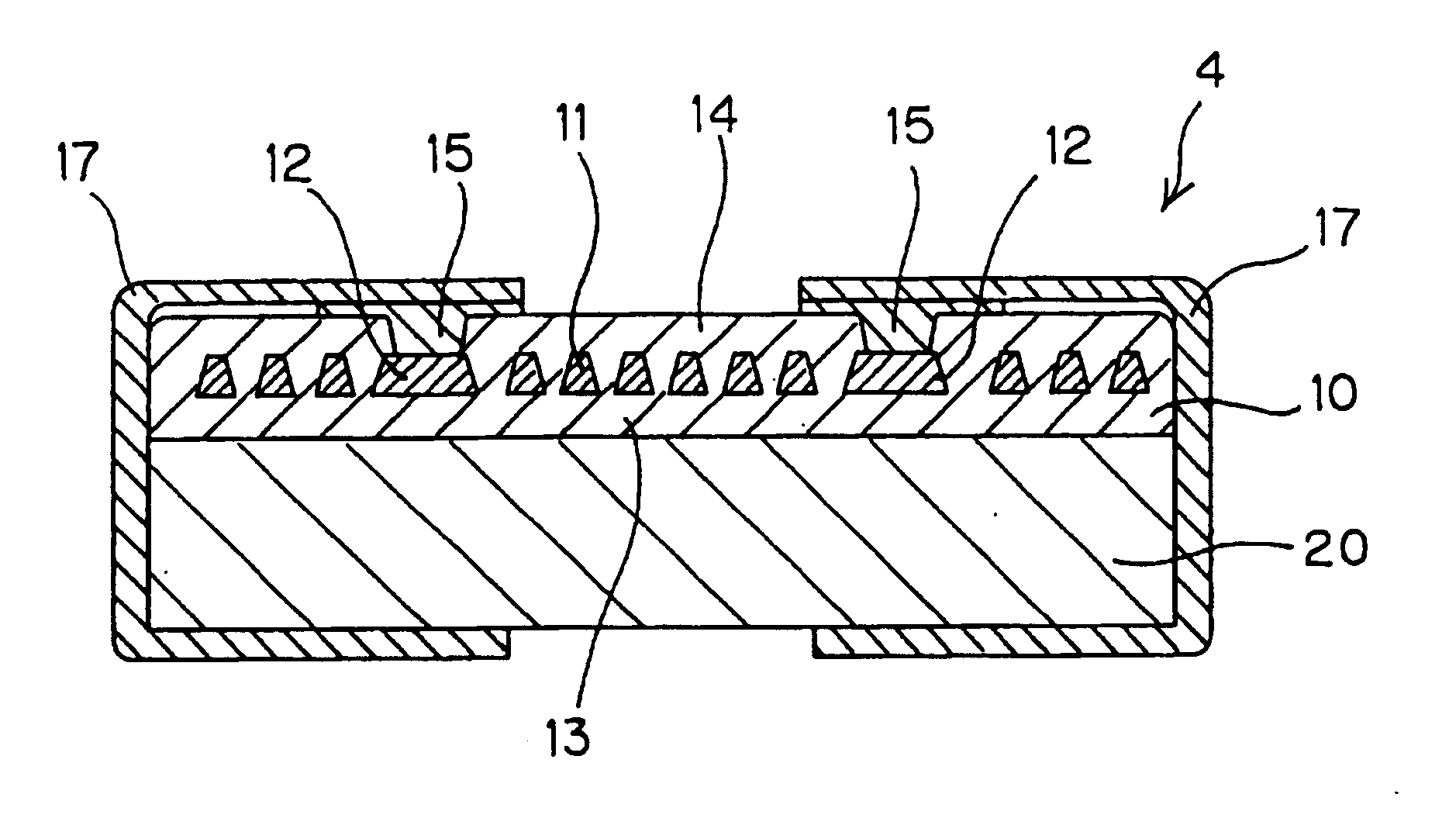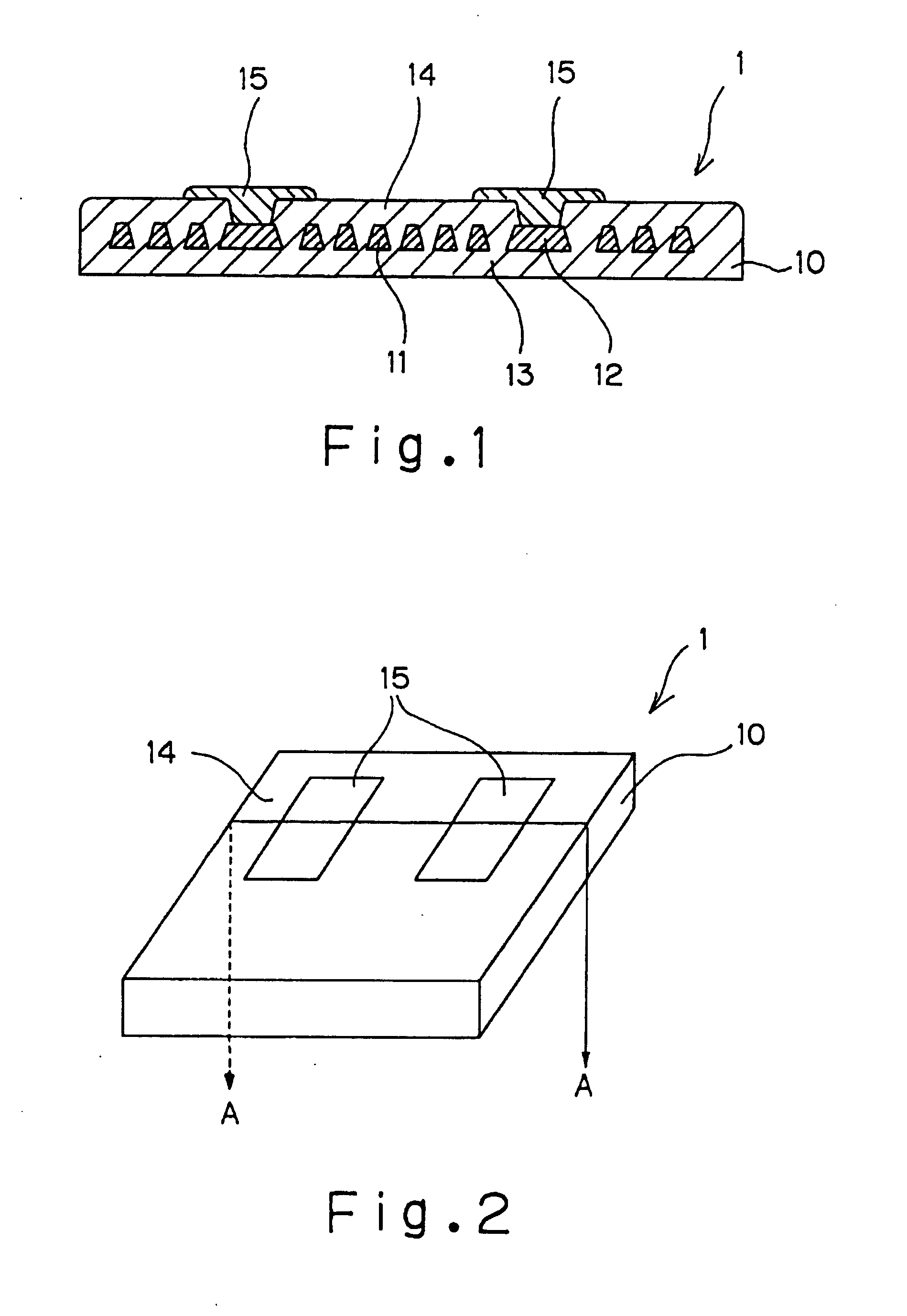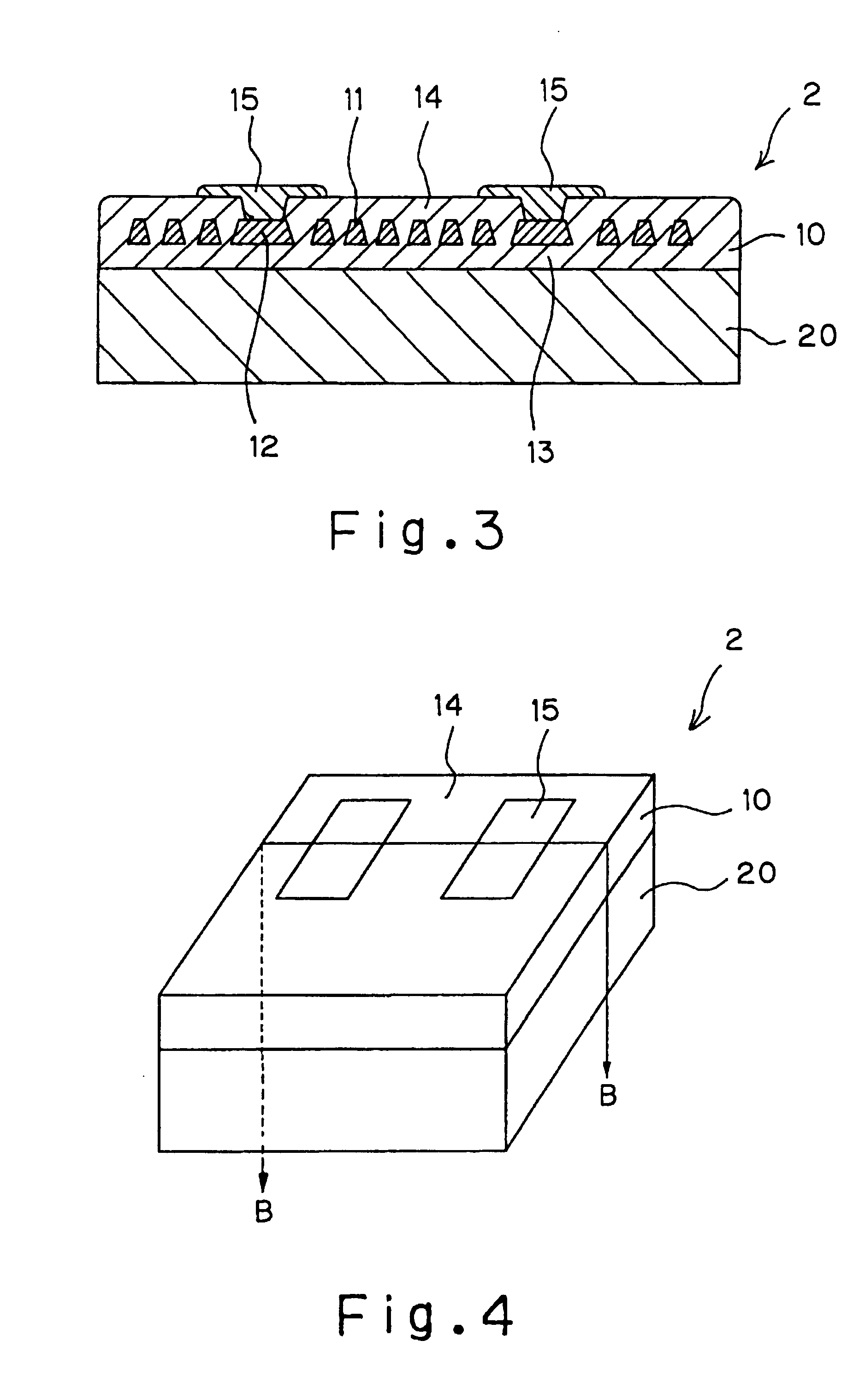Surface mounting type planar magnetic device and production method thereof
a planar magnetic and surface mounting technology, applied in the direction of magnetic core inductance, inductance, transportation and packaging, etc., can solve the problems of obstructing the thinning of a power supply unit, the production cost of the planar inductor is sure to rise with respect to the conventional magnetic device, and the production cost of the planar inductor is sure to ris
- Summary
- Abstract
- Description
- Claims
- Application Information
AI Technical Summary
Benefits of technology
Problems solved by technology
Method used
Image
Examples
example b
Al.sub.2 O.sub.3 was used as a substrate and a magnetic device was produced in the same process as the example A. These examples 3 and 4 are shown in Table 1. The characteristic of the magnetic device under the condition of 5 MHz is shown in Table 1 as examples 3 and 4. This table indicates that any substrate indicates an excellent characteristic.
Quality factor Q is expressed by the expression (4).
Q=2.pi.f L / Rs (4)
where
f=frequency (Hz), Rs (loss factor of inductance)=Rac+Rdc
Rac: AC resistance of inductance
Rdc: Dc resistance of inductance
The quality factor Q, was desired to exceed ten.
example c
Spiral arrangement, series arrangement of spiral, parallel arrangement of spiral and meander arrangement were used and a magnetic device shown in Table 2 was produced in the same process as the example A. Respective characteristics (under the condition of 5 MHz) are indicated in Table 2 as examples 5 to 8. The number of turns in the meander coil here refers to the number of folds. According to this Table 2, it is found that when the spiral coil is used, an inductance larger than the meander coil can be obtained and that two spiral coils are connected in series same as FIG. 13 and FIG. 14 such that mutual inductance between the coils is positive, an inductance twice or more larger than when a single spiral coil is used can be obtained.
example d
The condition of this example including the structure of coil is the same as the example A except that Cu, Ni and Ag shown in Table 3 are used as the coil material. In each case, an inductance and direct resistance Rdc, under the condition of 5 MHz was measured. By loading the coil on a DC / DC converter shown in FIG. 17 as a chalk coil and driving it at rectangular wave of 0.5 in pulse interval ratio (duty ratio) and 5 MHz, power efficiency was obtained. The power efficiency was obtained by a ratio of output power relative to input power in a circuit shown in FIG. 17. In the DC / DC converter 40 shown in FIG. 17, a pulse from a pulse generator 45 is applied to a circuit comprising a capacitor 42, a chalk 43 and a MOS-FET 44 so as to convert DC input 41 to alternate current and then the voltage is raised. Then, DC output 48 is outputted to a rectifying circuit comprising a diode 46 and a capacitor 47. Table 3 shows measurement results as the examples 9 to 11. It is found that the exampl...
PUM
| Property | Measurement | Unit |
|---|---|---|
| thickness | aaaaa | aaaaa |
| thickness | aaaaa | aaaaa |
| area | aaaaa | aaaaa |
Abstract
Description
Claims
Application Information
 Login to View More
Login to View More - R&D
- Intellectual Property
- Life Sciences
- Materials
- Tech Scout
- Unparalleled Data Quality
- Higher Quality Content
- 60% Fewer Hallucinations
Browse by: Latest US Patents, China's latest patents, Technical Efficacy Thesaurus, Application Domain, Technology Topic, Popular Technical Reports.
© 2025 PatSnap. All rights reserved.Legal|Privacy policy|Modern Slavery Act Transparency Statement|Sitemap|About US| Contact US: help@patsnap.com



